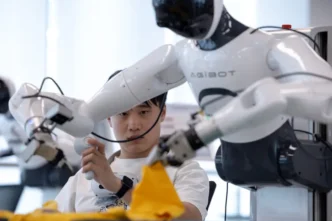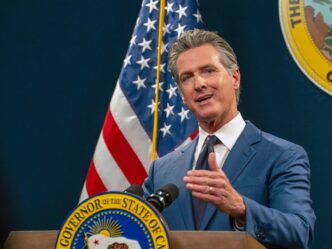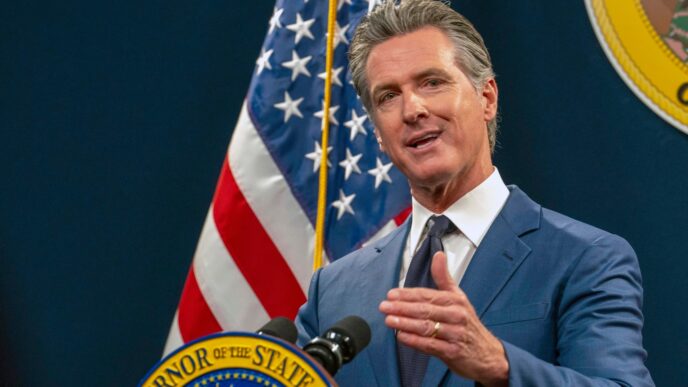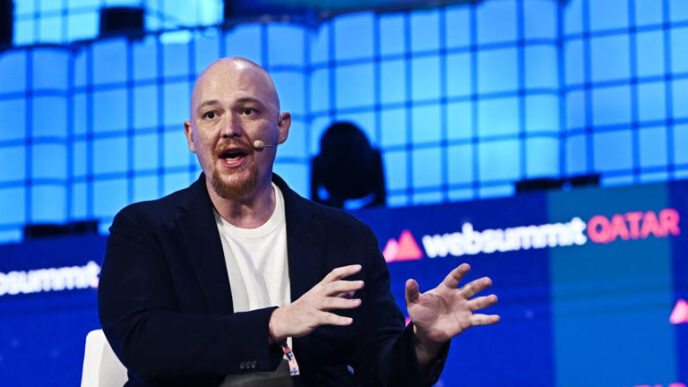Artificial intelligence has pushed productivity and wages to new highs, but some economists believe that momentum may not last. A new paper from the Brookings Institution warns that the surge could soon slow as the U.S. approaches what researchers call an AI wage downturn.
Ioana Marinescu, an associate professor at the University of Pennsylvania, coauthored the study with colleague Konrad Kording. Their research introduces the idea of “intelligence saturation,” a point where machines automate so many cognitive tasks that wage growth stops rising and begins to flatten. Marinescu believes the shift may be closer than most people assume, even though the effects are not yet visible across the entire labor market.
She argues that wages follow a hump-shaped pattern whenever automation spreads. At first, productivity increases, and wages rise with it. But as machines handle a larger share of mental work, that early boost begins to fade. Eventually, the gains flatten, and wages start to drop because humans no longer perform enough of the economy’s cognitive tasks.
Marinescu estimates that more than 14% of intelligence-based tasks are already automated. She based that estimate on research showing that routine cognitive jobs declined from 49% in the late 1970s and 1980s to 35% in 2018. When she looks at this trend, she sees a labor market edging closer to the point where wages could begin to fall.
She explained that this level of automation is “closer to a potential decline in wages than no automation.” Although that doesn’t confirm a downturn, it shows that the labor market is moving toward a zone where pressure on workers could build.
In the Brookings simulation, the real wage decline begins when roughly 37% of intelligence work is automated. If AI adoption continues at today’s pace, the economy could hit that mark much sooner than expected. However, Marinescu emphasized that it’s too early to say whether the shift has started.
Even so, she pointed to evidence that young workers might already feel the impact. According to a recent Stanford study, early-career professionals aged 22 to 25 in AI-exposed occupations such as software development and customer service experienced a 13% decline in employment since the rise of generative AI. Employment for older workers or those in less-exposed roles has remained stable or even increased.
She said the true warning sign would be a noticeable drop in the overall share of intelligence jobs across the economy. That shift would signal that the labor market has started to move workers out of mental tasks and into more physical or manual roles. If that happens, it could mark the beginning of the AI wage downturn the paper describes.
Yet Marinescu stressed that this path is not set in stone. The outcome depends on how society guides the economy through the transition. She views the physical and intelligence sectors as complements, not rivals. To her, labor and AI resemble labor and capital: both are necessary, and productivity grows when they work together.
She explained that wages rise steadily when AI and human labor complement each other. But she also warned that the long-run gains from adding more AI eventually saturate. Humans remain essential for parts of the economy that still rely on physical work, and these sectors must grow in step with AI improvements if wages are to remain strong.
The paper argues that physical industries such as construction, manufacturing, healthcare, and infrastructure play a crucial role. These areas anchor the economy because they require human involvement in ways AI still cannot replace. If society invests in these sectors while AI continues to advance, workers remain necessary. That balance helps prevent wages from collapsing even as automation increases.
The researchers suggest slowing the pace of automation to give the physical economy time to keep up. They also propose raising investment in physical capital so that embodied, real-world labor remains productive and valuable. Without that balance, the intelligence sector could grow faster than the physical sector can adapt, and wages could eventually fall.
Another idea in the report is a tax on virtual labor. This approach is designed to nudge companies toward maintaining a healthier mix of machine and human labor. It resembles the “robot tax” proposed by Sen. Bernie Sanders, which aimed to make sure firms that replace workers with automation still contribute to the wider economy. Marinescu noted that such policies could help prevent an uneven shift that leaves workers behind.
Still, the biggest uncertainty involves how substitutable human intelligence and AI output become over time. If AI eventually replaces most intelligence work, the economy could see wage growth flatten and decline. But if humans and machines continue to complement each other, each making the other more productive, then the economy can expand without pushing workers out.
She believes the future depends on whether society chooses a path where humans remain central to productivity or one where machines dominate. If the physical and intelligence sectors grow together, workers will stay essential, and wage growth can continue. But if companies pursue automation without balancing real-world investment, the early wage gains of the AI boom could peak much faster than people expect.
Marinescu summed it up by stressing that an AI wage downturn is not inevitable. The outcome depends on policy choices, investment decisions, and how companies decide to integrate AI into their workflows. For now, the warning signs remain subtle, but the direction of the next decade may depend on how quickly society takes action.













